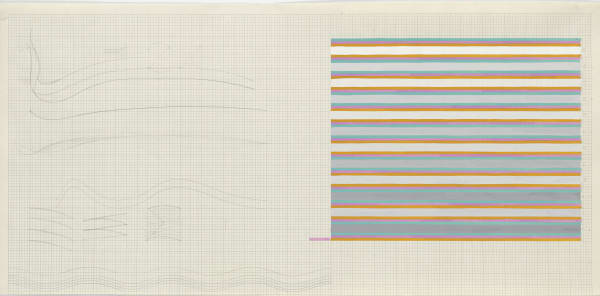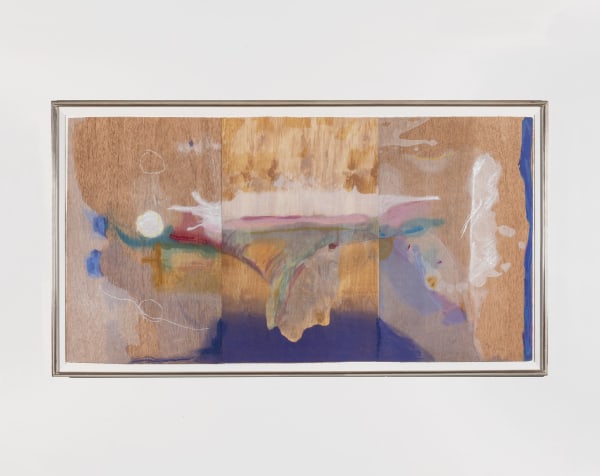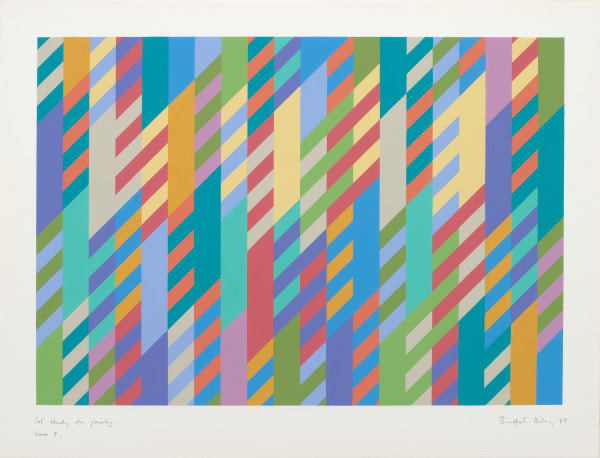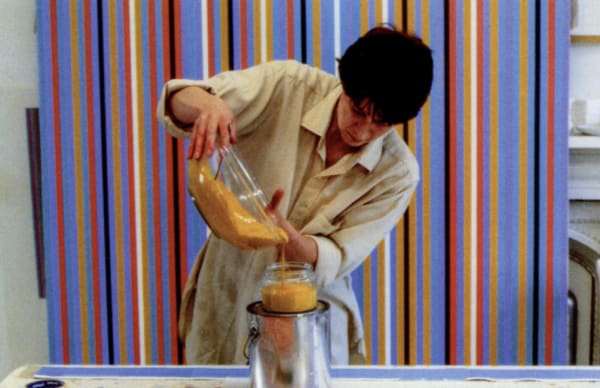Bridget Riley British, b. 1931
-
-
Bridget Riley (b. 1931) is one of the foremost proponents of Op Art, a style that plays with human perception to produce optically illusionistic works of art. The English painter studied art at Goldsmiths College (1949 – 1952) and at the Royal College of Art (1952 – 1955). Her early work was executed in a semi-Impressionist manner, and in the late 1950s, she adopted a pointillist technique. It wasn’t until the early 1960s that Riley began to develop her signature Op Art style consisting of black and white illusionistic patterns. She explored the dynamism of sight through her art, often producing a disorienting perceptual effect and deceiving the viewer’s eye. Riley began incorporating her characteristic bold, vivid colors in her work from the late 1960s onwards.
-
Selected Public Collections & Honors
Tate, London, United Kingdom
The Museum of Modern Art (MoMA), New York
The Metropolitan Museum of Art, New York
Centre Pompidou, Paris, France
National Gallery of Art, Washington DC
Art Institute of Chicago, Chicago, Illinois
Los Angeles County Museum of Art (LACMA)
San Francisco Museum of Modern Art (SFMOMA)
Stedelijk Museum, Amsterdam, Netherlands
Museum Ludwig, Cologne, Germany
National Galleries of Scotland (Scottish National Gallery of Modern Art), Edinburgh, Scotland
Victoria and Albert Museum (V&A), London, United Kingdom
The British Museum, London, United Kingdom
Sikkens Prize, (2012)
Rubens Prize, (2012)
Praemium Imperiale — Painting, (2003)
International Prize, Venice Biennale, (1969) -
Exhibitions
-

Women in Abstraction
Jan 15 – Mar 5, 2026View More -

Works on Paper
Mar 7 – Apr 25, 2024View More -

Bridget Riley
The Interactive Character of Color, 1970–2014 Apr 27 – Jun 30, 2016View More -
Paintings, Drawings & Sculpture
Jan 4 – 28, 2016View More -

Patterns of Abstraction
May 21 – Jun 26, 2015PATTERNS OF ABSTRACTION:View More
Al Held
James Hugonin
Callum Innes
Liza Lou
Sarah Morris
Bridget Riley
Rudolf Stingel
May 21st – June 2015
John Berggruen Gallery is delighted to present an exhibition of abstract paintings and works on paper by acclaimed artists Al Held, James Hugonin, Callum Innes, Liza Lou, Sarah Morris, Bridget Riley, and Rudolf Stingel. While dissimilar in their approach, these seven artists share a dedication to abstraction as their primary vehicle for expression.
Al Held (1928-2005) was born in Brooklyn, New York to an underprivileged Jewish family. It was not until he returned from a two-year stint in the Navy, in 1947, that he became interested in art. With the support of the G.I. Bill, he enrolled in the Art Students League of New York, and studied at the Académie de la Grande Chaumière in Paris. He is remembered today as a leading, yet unpredictable, figure in mainstream American Abstract Expressionist painting. Held established himself in the art world at a moment when new media increasingly encroached upon the more traditional realm of painting. Figurative painting was just beginning to gain grounds in the art world again, yet Held remained faithful to his individual abstract style (which evolved considerably as his career progressed). Held was an associate professor of art at Yale University from 1962 to 1980. His work has been the subject of group and solo exhibitions worldwide, including a major midcareer survey at the Whitney Museum of American Art (1974), and more recently at MoMA PS1 (2002) and the Smithsonian American Art Museum (2012).
James Hugonin (b. 1950) studied at the Winchester School of Art (1971-1974), West Surrey College of Art and Design (1971-1974), and Chelsea School of Art (1974-1975). He became interested in abstraction early on in the course of his education, and is primarily interested in examining color through vibrant, dynamic compositions of thousands of small scintillating elliptical markings. His Binary Rhythm series, an intense examination of the relationships forged between light and color, is a stunning exemplar of his style. Hugonin is greatly inspired by the works of Ian Stephenson and Georges Seurat, and by the Northumbrian landscape surrounding his home and studio. Striking a balance between stasis and motion, Hugonin’s vibrant hues dance across the canvas, yet are carefully restrained and controlled by the artist. His achievement of this delicate equilibrium testifies to the artist’s mastery of his medium and to his methodical and deliberate process. The semblance of randomness in the way Hugonin’s colored marks are laid out on the canvas obscures what is actually an excruciatingly deliberate practice: each elliptical mark is carefully placed on the canvas within an underlying structuring grid. The degree of precision in his work leaves no room for error, and although nothing is arbitrary about his methods, he consciously avoids creating patterns. Hugonin has exhibited around the world, and his paintings have been acquired by important public collections including the Tate Gallery and Victoria and Albert Museum, both in London.
Callum Innes (b. 1962) was born in Edinburgh, Scotland, and studied drawing and painting at Gray’s School of Art (1980-1984) before earning his post-graduate degree at the Edinburgh College of Art (1985). Innes began exhibiting his work in the late 1980s. Since having firmly established himself in the art scene during the nineties, Innes has solidified his status as one of the most significant abstract painters of his generation, achieving widespread recognition through major solo and group shows around the world. The artist tends to work alternately on a number of distinct series, each of which he revisits repeatedly, periodically. In the Exposed Paintings series, a single color (mixed by the artist himself) is brushed onto the canvas, then thinned with subsequent applications of Turpentine. Innes washes away the paint from the canvas in this manner, paradoxically un-painting the painting as much as he is painting it. This play between the additive and subtractive processes - the making and unmaking of the art - underlies this formally simple yet conceptually complex, sophisticated body of work. Innes is the recipient of numerous awards including the Jerwood Prize for Painting (2002) and Nat West Art Prize (1998), and was shortlisted for the prestigious Turner Prize in 1995. His work is in the permanent collection of institutions worldwide including the San Francisco Museum of Modern Art; Tate Gallery, London; Centre Pompidou, Paris; and the Guggenheim Museum, New York.
Liza Lou (b. 1969) is an American artist known for constructing dazzlingly intricate sculptural installations and smaller-scale works out of hundreds of thousands of minuscule beads, her trademark medium. Diligence and repetition are the hallmarks of her meticulous process: each individual bead is carefully placed using tweezers. Consequently, her works often take years to complete. She divides her time between her Los Angeles and KwaZulu-Natal, South Africa studios. From her South African base, Lou collaborates with local Zulu artisans, capitalizing on the region’s rich history involving the traditional craft of bead-working while providing work for a largely disenfranchised segment of the population. Lou’s works are meditations on labor (especially that of women) and endurance, and frequently explore psychological space and confinement. Lou has been awarded the Anonymous Was a Woman Artist Award (2013) and a MacArthur Foundation Fellowship (2002). Her work has been featured in recent solo exhibitions at the Museum of Contemporary Art, San Diego (2013) and SCAD Museum of Art, Savannah (2011), and in group exhibitions at the Metropolitan Museum of Art, New York (2010) and Museum of Contemporary Art, Los Angeles (2010), among many others.
Sarah Morris (b. 1967) is an internationally recognized painter and filmmaker, celebrated for her complex abstractions which play with and explore architecture and the psychology of urban environments. Her canvases are smooth surfaces made up of elegant color combinations whose curves, vectors and interlocking formations refer to a distinct way of perceiving our surroundings, and speak to her continued exploration of and fascination with the built environment. Geometry reigns supreme in the American artist’s compositions, which owe much to maps and the aerial point of view. Sarah Morris’s work has been shown worldwide, in solo exhibitions in Sao Paulo, New York, Paris, London, Berlin, Istanbul, and Vienna, to name but a few. She has also been included in group exhibitions at the Centre Pompidou, Paris (2014); Museum of Contemporary Art, Chicago (2013); and Museo de Arte Contemporáneo, Buenos Aires (2012).
Bridget Riley (b. 1931) is one of the foremost exponents of Op Art, a style that plays with human perception to produce optically illusionistic works of art. The English painter studied art at Goldsmiths College (1949-1952) and at the Royal College of Art (1952-1955). Her early work was executed in a semi-Impressionist manner, in the late 1950s, she adopted a pointillist technique. A 1958 exhibition of Jackson Pollock’s work at Whitechapel Gallery had a major impact on the young artist, but it wasn’t until the early 1960s that Riley began to develop her signature Op Art style consisting of black and white illusionistic patterns. She explored the dynamism of sight through her art, often producing a disorienting perceptual effect and deceiving the viewer’s eye. Riley began incorporating her characteristic bold, vivid colors in her work from the late 1960s onwards. The celebrated artist has been honored with the Sikkens Prize (2012), Rubens Prize (2012), Praeminum Imperiale for Painting (2003), and the International Prize at the 1969 Venice Biennale, among numerous others. Riley’s works have been highlighted in solo exhibitions around the world, including at the Art Institute of Chicago, Chicago (2014); Stadtische Galerie, Schwenningen (2013); and National Gallery, London (2010).
Rudolf Stingel (b. 1956) is an Italian-born American artist whose work challenges the viewer to critically consider their own perceptual experience in viewing art. In doing so, he asks his audience to critically evaluate current notions about painting as a means of communication and expression. Stingel’s works frequently mobilize Conceptual and installation art to investigate the creative process. Often, the artist uses inexpensive and readily available materials ranging from Styrofoam to carpet. The surfaces of Stingel’s two-dimensional works are frequently carved, indented, or otherwise altered, providing visible, physical evidence of his interest and engagement with industry and industrial matter. The artist currently splits his time between New York City and Merano, Italy. Stingel participated in the 1999 and 2003 Venice Biennales, and was the subject of a mid-career retrospective at the Museum of Contemporary Art, Chicago which traveled to the Whitney Museum of American Art (2007).
For further information and for photographs, please contact the gallery at (415) 781-4629 or at info@berggruen.com
-
-
Publications
-

Berggruen Gallery: 50 Years
1970 – 2020 2020Hardcover, clothbound and slipcased, 465 pagesRead more
Publisher: Berggruen Gallery, San Francisco
ISBN: 978-0-578-60871-6
Dimensions: 9 1/2 x 12 1/4 x 2 inches -
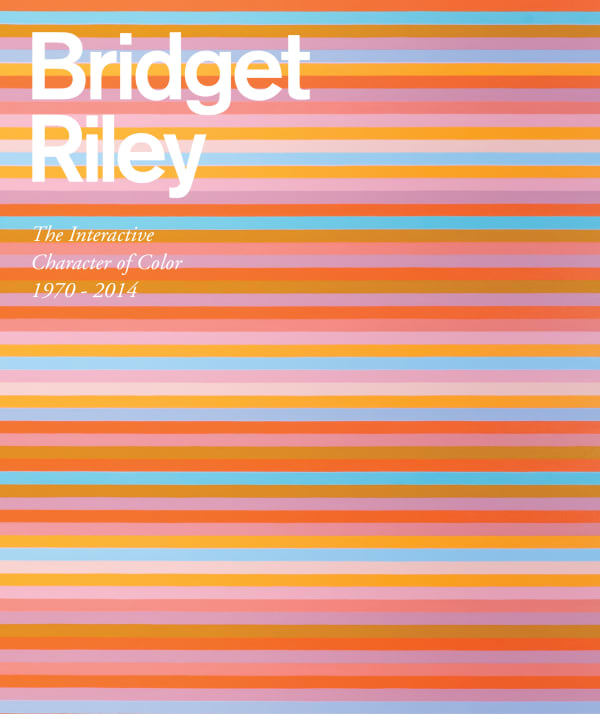
Bridget Riley
The Interactive Character of Color, 1970 – 2014 Michael Bracewell, 2016SoftcoverRead more
Publisher: Berggruen Gallery, San Francisco
-
-
News
-

Gallery Chat: John Berggruen, Preeminent San Francisco Art Dealer for 47 Years on the New Space Near SFMOMA, San Francisco’s Contemporary Art Market and More
The Art Dealers Association of America | By Nicole Casamento June 13, 2017John Berggruen Gallery’s history is synonymous with the growth of San Francisco’s art market. Though Berggruen started his eponymous gallery with just $5,000 worth of...Read more -

John Berggruen’s Latest Opening Is His Own
1stdibs: Introspective Magazine | By Kenneth Baker February 6, 2017The veteran art dealer, along with his wife and business partner, Gretchen, has launched a multistory gallery in San Francisco. Before I moved to the...Read more -

Berggruen presents Bridget Riley’s first S.F. exhibition
SFGate | By Jessica Zack June 14, 2016As a young London artist in the 1950s, Bridget Riley was painting figurative studies and nature scenes when Georges Seurat’s Pointillist experiments sparked in her...Read more -

San Francisco's BOOMING CULTURESCAPE prepares to bask in the glow of the new SFMОМА
Culture Magazine | By May 1, 2016As San Francisco gallerist John Berggruen unveils the first solo Bridget Riley exhibition in S.F., motion is on his mind. This historical survey features the...Read more
-
-
Art Fairs
-

Art Basel Miami Beach
Miami Beach, Florida Dec 4 – 9, 20242024 will mark Berggruen Gallery’s twenty-second consecutive year participating in Art Basel Miami Beach, since the fair’s inception.View More -
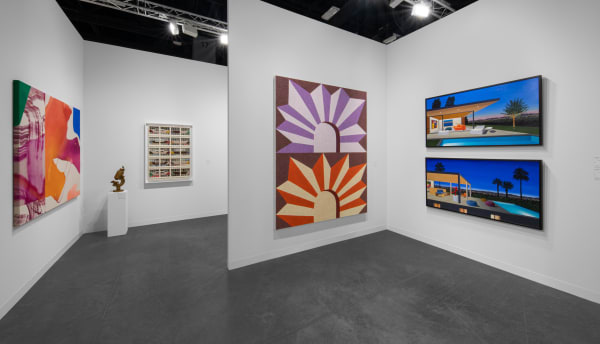
Art Basel Miami Beach
Miami Beach, Florida Dec 7 – 10, 2023View More -

Art Basel Miami Beach
Miami Beach, Florida Nov 29 – Dec 3, 2022View More -

Frieze Masters
London, United Kingdom Oct 13 – 16, 2022Berggruen Gallery is pleased to announce its inaugural participation in Frieze Masters London. Please visit us at The Regent's Park, Stand G07, where we will...View More -
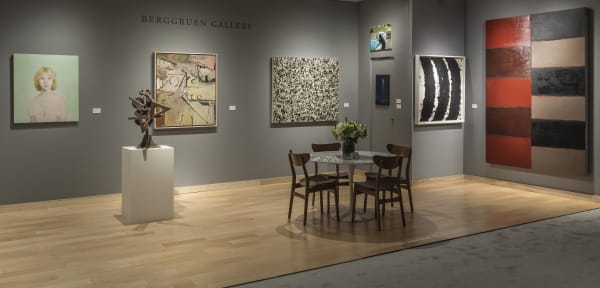
ADAA The Art Show
New York City, New York Feb 28 – Mar 3, 2019Berggruen Gallery is pleased to announce its participation in The Art Show 2019 organized annually by the Art Dealers Association of America (ADAA). Please visit...View More -

FOG Design + Art
San Francisco, California Jan 17 – 20, 2019Berggruen Gallery is pleased to announce its participate in FOG Design+Art 2019. Please visit us at Booth 313 at the Fort Mason Center, Festival Pavilion,...View More -

TEFAF
New York City, New York May 4 – 8, 2017Berggruen Gallery is pleased to announce our participation in TEFAF New York Spring at the Park Avenue Armory. Please visit us at Stand 90, where...View More -

Art Basel Miami Beach
Miami Beach, Florida Dec 1 – 4, 2016Berggruen Gallery is pleased to announce our participation in Art Basel Miami Beach. Please visit us at booth D3 at the Miami Beach Convention Center.View More -

Art Basel Miami Beach
Miami Beach, Florida Dec 3 – 6, 2015John Berggruen Gallery is pleased to announce our participation in Art Basel Miami Beach. Please visit our booth D03 at the Miami Beach Convention Center.View More -

Expo Chicago
Chicago, Illinois Sep 17 – 19, 2015John Berggruen Gallery is pleased to announce our participation in the International Exposition of Contemporary & Modern Art (Expo Chicago) September 17th – 20th, 2015,...View More -
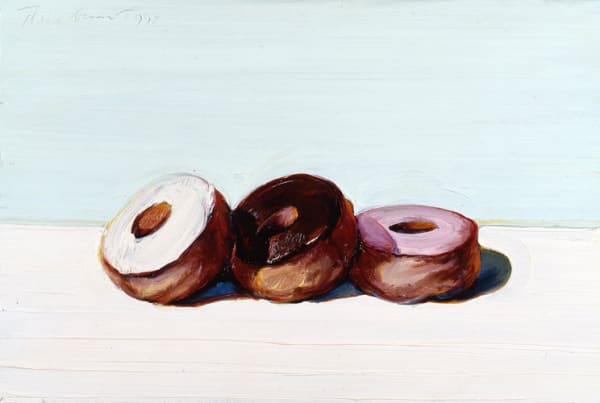
Art Basel Miami Beach
Miami Beach, Florida Dec 3 – 7, 2008John Berggruen Gallery is pleased to announce our participation in Art Basel Miami Beach. Please visit our at the Miami Beach Convention Center. Hope to...View More
-
-
-
Inquire
Send me more information on Bridget Riley

